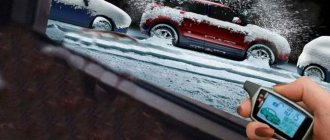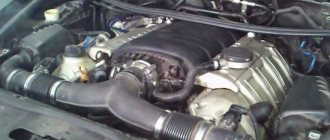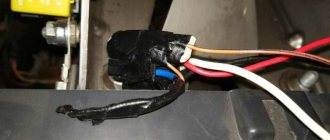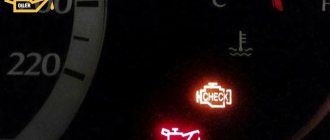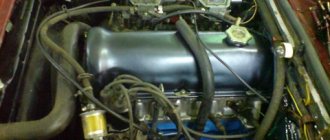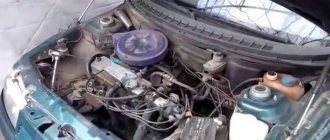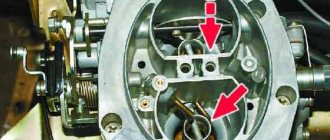A car may not start for many reasons. Moreover, drivers are faced with a problem when the car does not start in cold weather, when cold, when hot, after major repairs, and so on. This problem affects both gasoline (injection and carburetor) and diesel engines.
Basically, the car will not start if : a discharged battery, problems in the fuel supply system, dirty filters, etc. This situation can happen not only with a car whose owner does not care about the technical condition of the car, but also with a car owner who regularly takes care of his “iron horse”. Next, we will consider the previously listed reasons in more detail, and we will figure out what can be done in this or that case.
There is no fuel in the car
This is the most common problem faced by millions of car enthusiasts. The fuel level is the first thing you should check, no matter how funny it may sound. After all, you may well not have noticed that the car’s fuel level is at zero. Yes, it may look stupid, but believe me, very often this is the reason the engine fails to start. So if this happens to you, go to the gas station. Here is a simple solution to the problem.
The clamps of the high-voltage wires are loose
The second most common reason for the engine not starting is poor contacts of high-voltage wires with the battery terminals. This occurs due to the fact that the clamps of the high-voltage wires have become loose. So if your car won't start, open the hood and check the tightness of the terminals and their condition. If there is oxidation on them, clean the terminals and then try turning the ignition on again. By the way, the first sign that the terminals have poor contact due to poor tightening is oxidation on them.
Loose and oxidized wire connections
Over time, the connections at the battery terminals, solenoid relay, or ground wire can become loose or corroded, which can cause the car to fail to start.
To check the wire connections, open the hood and carefully inspect the battery terminals. A whitish or greenish coating around the battery terminals indicates a loose connection between the wires and the battery. A film of oxides or deposits disrupt the electrical contact and increase resistance, the current supply decreases and there is not enough of it to start the engine.
Disconnect the wire terminals from the battery terminals and clean them with fine sandpaper, a rag or brush with a soda solution, then treat them with a special spray to prevent further oxidation. Connect the wire clamps to the battery terminals and tighten them properly. The wire terminals should not rotate, much less be removed by hand.
After checking the terminal clamps on the battery terminals, also check the tip of the negative wire connecting the battery to the body and the tip of the positive wire connecting the battery to the starter. Clean oxidized contacts and tighten securely.
Regular checking of power wires and their connection points will save the car owner from a number of problems. Carry out this check yourself or ask the technician about it during your next maintenance.
Battery contacts are dirty
If you see some kind of whitish, greenish tint around the battery terminals, then the connection of the high voltage wires to the battery may be weak. Carefully remove the clips from the battery (plate is acidic) and clean the battery terminals with a suitable tool (such as a metal cleaning brush). If you don't have a tool handy, try tapping each battery terminal with a car key of some kind to knock some dirt and residue off the contacts. Then repeat the engine starting process again.
The battery is dead
So, have you checked the high voltage wire clamps, battery terminals and found nothing? Still don't know why your car won't start? Your car's battery is probably dead. If you have wires for "lighting up", you can find another motorist who will agree to help you "light up" your car. If your car was started by another car, have your car's battery diagnosed by a mechanic. It may be time to get a new battery.
Starter does not respond
When you put the key in the ignition (or, in newer cars, press the start button), an electric motor (called the starter) connected to the car's battery turns on your engine to start it. If the starter does not turn, but simply clicks or makes a terrible grinding noise, it’s time to call a tow truck or tow the car to a service center. Most likely the starter has failed.
Why won't the car start
The most common reasons why a car stalls or refuses to start at all:
- Generator or battery
- Starter
- Gasoline and diesel
- Spark plug
- Alarm and immobilizer
- Electrics
- Crankshaft sensor
- Gasoline pump
- Exhaust pipe
- Egnition lock
Let's tell you more about each of them and consider possible ways to solve the problem.
Generator or battery
The car engine may not start due to a malfunction of these components.
The generator converts the crankshaft energy into electricity and supplies it to the car's network. And if it is faulty (for example, the belt breaks), then the battery stops charging. If the unit fails, the dashboard of new cars will signal this.
It is not possible to repair the generator on site. Cars with a manual transmission can be started using a pushrod. Otherwise, you need a qualified auto electrician.
The problem may also be in the battery itself. How long ago did you change it? As you know, it is advisable to update it every 3 to 5 years, depending on the model. So the possible reason for the ignition fiasco lies in a dead battery.
For example, the day before you were stuck in traffic jams a lot. When the engine is idling, the battery is not recharging. And to charge it you need about an hour of continuous driving. If the part is old, it could simply shrink overnight. But it is possible that everything is fine with the battery itself. The reason that the car stalls should be looked for at the periphery of the battery.
What to do
Inspect the terminals. They shouldn't be dirty. If they have oxidized, you need to clean them with a rag, sandpaper or brush with the addition of a soda solution.
If the terminals are clean, perhaps they are simply loose and need to be tightened. Make it a rule to carry out this procedure for preventive purposes once every couple of months.
It would also be nice to know whether the car’s battery is serviceable or not. If it is serviced, then you need to unscrew the plugs and assess the electrolyte reserve. Perhaps adding distilled water will help.
When you turn on the starter and see that all the electrical equipment of the car goes out, it means the battery is dead. There is only one way out - change. And in order to start the car, you need to ask another car owner for a “light.” Moreover, it is better for the driver of a working car to rev up to 3000 rpm at this moment in order to provide sufficient voltage for starting.
show more
Starter
The starter is the main device of the starting system. Without it, the car won't start. You turn the ignition key and current from the battery is supplied to the starter, which starts the engine.
What to do
Let's look at two situations. First, if the starter rotates, a characteristic sound is heard, but the engine does not start. There is no need to torment the system for a long time - just drain the battery.
First you need to check the most obvious problem - whether there is gas in the tank. If there is fuel, the starter turns, but still does not start, check to see if the spark is lost. This electrical problem is typical for gasoline engines and requires repair by specialists. Also, when the starter rotates, the car may not start if there is a breakdown in the ignition system or problems with compression. As a rule, these issues cannot be resolved on your own and you need to go to a service center.
In the second case, the starter does not rotate at all. Only the characteristic clicks of the traction relay can be heard. The starter may have become rusty or broken. Corrosion can be cleaned off at a car service center. In other cases, only replacement.
The cause could also be a faulty bendix. It is located on the starter shaft. Here you can suggest a small life hack: try gently knocking on it and try to start the engine again. Due to external influence, the bendix will engage and the engine can start.
To start a car, sometimes it’s enough to ask another car owner for a “light.” Photo: shutterstock.com
Gasoline and diesel
The fuel may simply run out. For example, the day before you had a hard day, and you did not notice the light on the dashboard. Or the arrow froze/broke/stuck, and there was simply no notification.
The characteristics of gasoline or diesel may also be the reason that the car does not start in the cold. Gasoline with a lower octane rating (92 versus 95) will perform worse. A diesel engine has a specified temperature range at which it should be used.
The worst thing is if there is a leak in the system. Look under the car, inspect the ground nearby to see if there is a fuel spill.
By the way, the oil can also thicken at subzero temperatures if you did not fill in the all-season version. Or if the engine oil has been changed for a long time, it turns into a kind of tar and stops performing its tasks.
What to do
If the cold is to blame, then there is only one option - to warm up the car in a warm garage. If you run out of fuel, call a taxi and go to the gas station. Remember that neither gasoline nor diesel is sold in ordinary cans and bottles. Only in special safe containers, for example, metal canisters.
Another option is to ask passing cars to share gasoline. If you come across an old domestic car like a Zhiguli, then the method is familiar to everyone: a hose, sucking the air out of it and pouring it through a funnel into another gas tank. Unfortunately, this trick will not work with modern cars - they have a different gas tank design.
show more
Spark plug
The spark plugs cause a spark that ignites the fuel, the pistons fire and the engine starts. The part is small and can easily fail. As a result, the car will not start.
What to do
Carefully unscrew the spark plugs using a torque wrench or other tool specified in the instructions. Inspect the item. If it is dry, then there is no fuel in the cylinders. There may be several reasons for this - from faulty injectors, to the lack of the required gasoline pressure in the rail due to blockages in the fuel line, pump failure, etc. All that remains is to go for diagnostics. The spark plugs may be dry due to simply running out of gas.
Another situation is when the candles, on the contrary, are flooded. Over time, carbon deposits form on them, which prevents the spark from striking normally. Try wiping and drying the candles and then replacing them. The part should be replaced in the near future.
You can unscrew the spark plug and insert it into the high-voltage wire. Place it on the engine and turn the starter. Your task is to see the spark. If it is, everything is fine. If not, the problem is in the ignition system.
show more
Alarm and immobilizer
Modern anti-theft systems are not only responsible for sound notification to the entire neighborhood that they are trying to take possession of the car. They also block the engine mechanisms. For example, a fuel pump. The alarm may malfunction and not unlock the mechanism. Sometimes the service does the wrong installation. For example, they put a blocking relay where it shouldn’t - car manufacturers usually specify acceptable options in the instructions.
An immobilizer can block the engine. It is often installed standard in new cars. This anti-theft system prevents the engine from starting and the car will not start.
What to do
Try setting the car alarm again and then unlocking it. If the problem is due to incorrect installation, then only the service will help. Examine the alarm key fob. Is there a new light on there? You may have turned on the immobilizer completely by accident. Look in the instructions on how to disable it. The problem may also lie in the fact that the immobilizer does not recognize the key. In this case, it needs to be reprogrammed in the service.
The fuel pump relay has failed
When your car stalls and won't start, or if it jerks and chugs when starting, but then the engine still starts, pay attention to the fuel pump. Or the fuel pump relay. True, if you do not understand anything about car repair and diagnostics, you will have to contact a specialist.
Sensor malfunctions
What happens: the starter turns, but the engine does not start. The Check Engine light is on on the dashboard.
All processes in the engine, including starting, are controlled in modern cars using an ECU. The “brains” read the readings of numerous sensors, and if any of them fails, the operation of the motor is disrupted or blocked. This is possible due to malfunctions of the crankshaft and camshaft position sensors, as well as idle speed, coolant temperature or detonation sensors.
What to do: identify and replace the defective unit. Unfortunately, only service specialists can do this. However, if you have an ELM327 scanner, you can try to find the problem yourself.
Your car is fine, but the fob/key doesn't work
The reason your engine won't start may have nothing to do with your car at all. It is quite possible that the battery in your key fob has run out. Check your vehicle's manual to find out how to start your car in this situation, or have your dealer diagnose the key/fob (in case the key has failed).
You cannot start the engine because the automatic transmission is in Drive mode.
Another possible reason why your car won't start is if you may be forgetting to put the automatic transmission into Park from Drive or Reverse - R when you turn off the engine. In order to start the engine, move the automatic transmission selector to the “Parking – P” mode and try to start the car again.
The candles are filled with gasoline
Modern cars with electronic fuel injection do not require you to pump fuel by pressing the gas pedal before starting the engine. So there is no need to press the gas pedal before starting the injection engine, so as not to fill the spark plugs with gasoline. Otherwise, you may not be able to start the engine. Unfortunately, some drivers forget about this. Especially if you recently switched from a carburetor to an injection car. In general, of course, you can fill the spark plugs on a carburetor engine. But with an injection machine this can be done very quickly. Spark plugs filled with gasoline will not be able to produce a spark when starting the engine to ignite the fuel mixture in the combustion chamber.
Problems with the ignition system
What happens: the starter turns, but the engine doesn’t even catch.
In the absence of a spark, the fuel-air mixture does not ignite and, accordingly, the engine cannot start. The reasons lie in broken ignition coils or wires, as well as spark plugs with a layer of soot or a cracked insulator.
What to do: the easiest way is to unscrew the spark plugs and visually assess the condition of the electrodes: they should be clean and dry. Next, put on the spark plug, attach the spark plug thread to the metal part of the engine and turn it with the starter. If there is a spark, then everything is in order with the ignition. If not, you need to try other spark plugs, and then check the wires and coils, also replacing them with known good ones.
It's time for a new timing belt
If your engine is silent when you turn the key in the ignition, then it is quite possible that the timing belt has broken. This is a serious problem that you will need a mechanic to fix. The timing belt is the most important engine maintenance item. The fact is that a failed timing belt can lead to engine damage in many cars, resulting in the need for expensive major repairs or even a complete replacement of the engine.
See also: Why change the timing belt
Yes, there are cars where a broken timing belt does not lead to engine damage, but there are fewer such cars than those where belt damage leads to dire consequences. It's all about the valves, which, when the belt breaks, meet the pistons, resulting in damage to both the valves and the pistons. Unfortunately, no matter what type of engine you have, if the belt breaks, you will have to call a tow truck and drag the car to a car repair shop.
Generator
A generator is a device that converts part of the engine's energy into electric current, which is also used to charge the battery.
If the generator fails, the battery does not charge at all or is undercharged, resulting in the battery not having enough charge to start the engine.
The best way to solve a problem with a non-working generator is to contact a car service center, where it will be repaired or replaced. You will have to deliver the car to the service station by tow or tow truck.
The computer is not working
Modern cars have several high-tech computer gadgets built into them. Computers receive information from various sensors. Including engine malfunctions. If your car does not start, then perhaps some sensor that informed the computer about a problem in the engine caused it to block the start. It is also possible that there are problems with the computer that controls the engine (control unit). In any case, you need to contact a specialist to conduct comprehensive electronic diagnostics of the car.
See also: How to diagnose a car yourself
Control block
The electronic engine control unit is one of the most important elements of a modern car. The electronic control unit reads information from a large number of sensors that the engine is equipped with and controls all processes in the engine, including its starting.
The electronic engine control unit controls the ignition, analyzes the throttle position6, controls fuel injection processes, controls the variable valve timing system, controls the coolant temperature, and controls the exhaust gas recirculation system.
The electronic engine control unit is an electronic board that is housed in a plastic or metal housing. The engine control unit can be installed in the engine compartment or inside the vehicle, in the area of the center panel on the driver or passenger side. The installation location of the engine control unit is indicated in the vehicle's operating manual.
Malfunctions of the electronic engine control unit occur due to strong mechanical shock or vibration, which results in cracks in the electronic board or contact points, severe overheating of the electronic unit or sudden temperature changes, moisture on the electronic board and connectors, resulting in corrosion of the housing and connectors of the control unit. In some car models, the engine control unit is located extremely poorly; after just a few years of operation, it undergoes very severe corrosion and then fails.
The electronic engine control unit may fail due to incorrect actions by the car owner: removing the battery terminals with the engine not turned off, trying to light the car from another car with the engine not turned off, trying to start the engine with a connected battery with the terminals mixed up.
Malfunctions of the electronic engine control unit in most cases are solved in the only possible way: by expensively replacing the electronic unit with a new one.
Seat belts not fastened
Believe it or not, some cars won't start unless the seat belts are securely fastened. Safe, yes, but nevertheless, the owners of such cars are very upset and angry because of such a setting. So before you scold your car for not wanting to start, fasten your seat belts. Your car may be equipped with this unusual feature. By the way, you can disable it by reconfiguring your computer.
You have not disarmed the car, or the steering wheel is not fully unlocked
In many cars, if you do not unlock the steering wheel by inserting the key into the ignition, the engine may not start. In this case, push the steering wheel slightly in any direction while turning the key in the lock. This will unlock the steering wheel and start the engine.
Also, very often, many drivers cannot start the engine without removing the car from the security system. In most cars, when the alarm is on, the ignition interlock works. In this case, remove the car from the alarm system and restart the engine.
Diesel freezing
This is the jelly that forms inside the filter / patch.com
What happens: the engine simply does not start.
Fuel that is not appropriate for the season in diesel cars thickens greatly in the cold. The paraffins included in its composition precipitate, clogging the fine filter and fuel lines. All this causes the engine to not start.
What to do: return the diesel to fluidity. To do this, you need to warm up the car in a warm garage or pour a special antigel additive into the tank. Afterwards, drain or use up the remaining summer fuel and refuel with winter fuel.
Sometimes you can get by with little blood and use a hairdryer to warm up just the fine filter under the hood.

